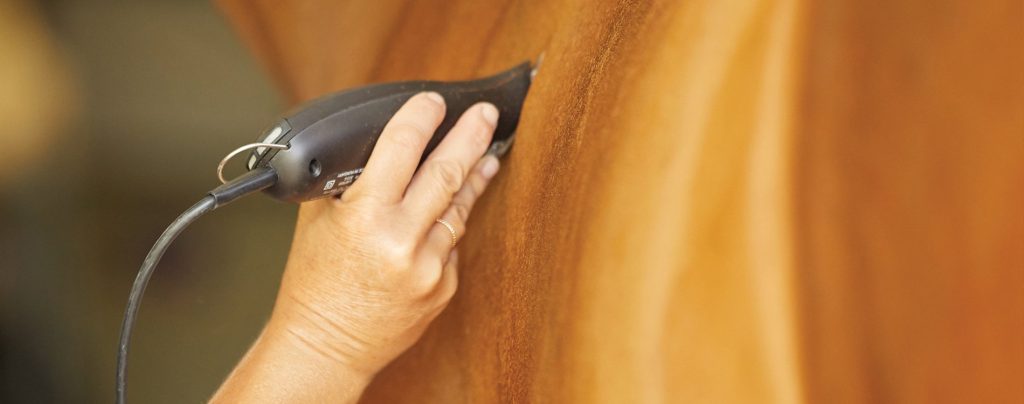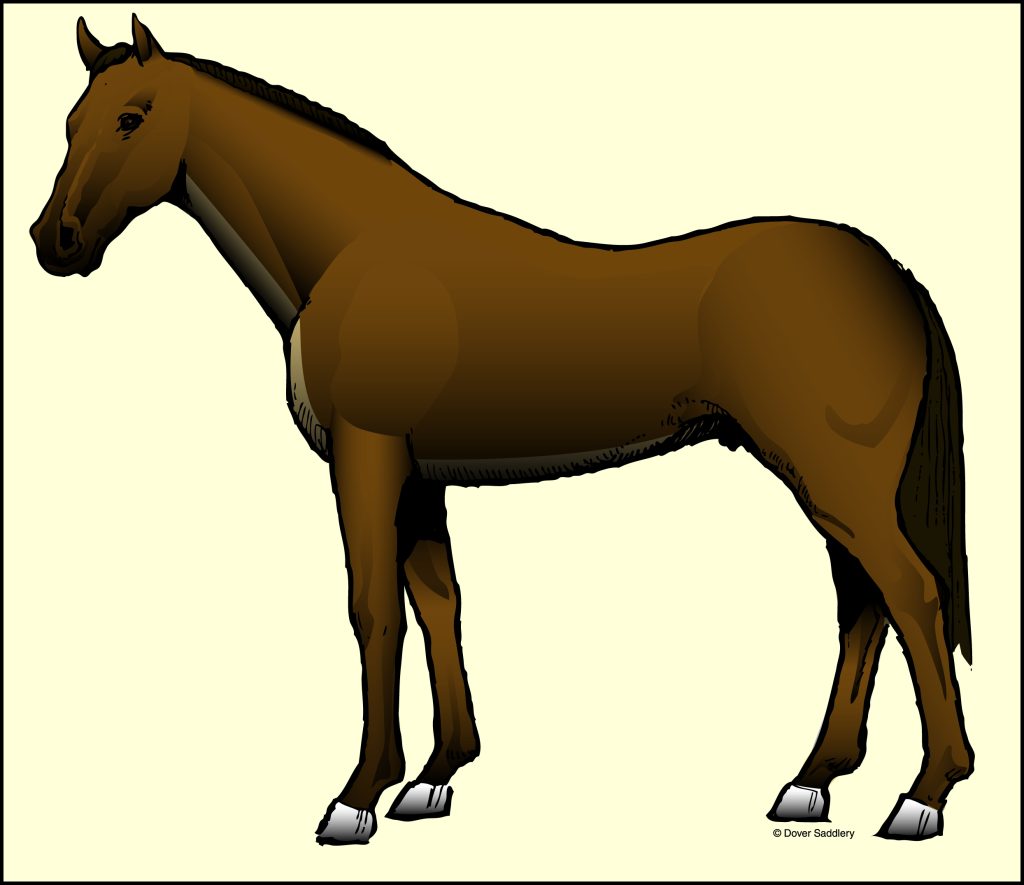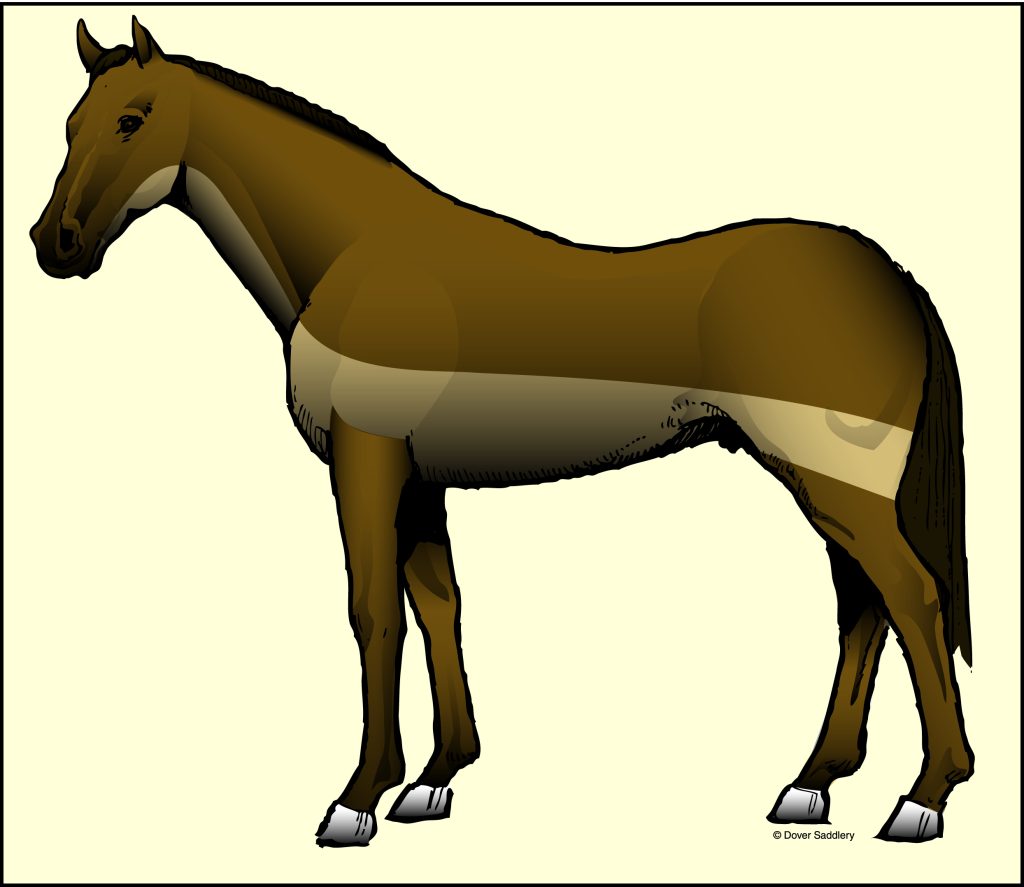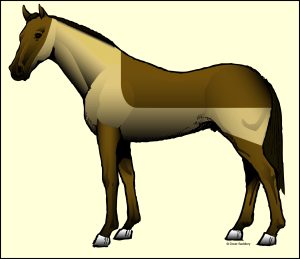
We can help you decide whether body clipping is a good choice for your horse, and if so, how much hair you want to remove. The decision comes down to how much your horse works in cold weather and your willingness to manage blanketing to compensate for loss of natural protection.
Thick coats and the additional grease produced in horses’ skin in winter combine to protect them against wet, cold weather. These assets become detriments, however, when a horse is worked regularly to the point of sweating. Perspiration mixes with grease in the coat, creating a film that mats the hair and clogs the skin. As the hair dries painfully slowly, the horse is vulnerable to chills, muscle soreness and illness. Skin issues such as fungal infections can also result. Some amount of body clipping becomes wise if you and your horse are in a steady program of regular work.
Here’s a list of our favorite, traditional body clips. The one you choose depends on the type of work you’ll do, how much your horse perspires, and what is acceptable for your riding discipline. Some people find it helpful to mark an outline of their desired body clip using chalk or using a small set of clippers.
Strip Clip
This minimal clip is perfect for a horse in light work only and for a horse owner wishing to avoid blanketing except in the coldest temperatures. The clip pattern removes a strip of hair on the front of the horse’s neck along the jugular, through the front of the chest and under the belly.
Trace Clip
Named after its original use on harness horses, the trace clip removes a swath of hair from areas horses perspire most—classically along the areas where the harness traces would touch the horse. This clip may be your choice if your horse typically runs cold or doesn’t grow a thick coat. Hair is removed from the underside and sides of the neck, shoulders and belly and is left intact on the legs and body. Some people clip a narrow swath of hair, while others prefer to clip hair about halfway up the horse. Managing comfort and warmth will necessitate the use of blankets.
Blanket Clip
You may want to use this clip if your horse gets regular, heavy work in winter. A horse will most likely need to wear a blanket with this clip, and possibly a neck cover. This clip removes hair in a pattern that leaves the horse looking as though it is wearing an exercise rug made of hair. Hair is removed from the head, neck and flanks, but is left intact on the back, hind end and legs.
Hunter Clip
Named for its traditional use on field hunters, a hunter clip is helpful for horses in hard work. The clip removes most of the hair on the body, leaving only a patch of hair on the horse’s back in the shape of a saddle (to provide some protection from friction of the saddle). Hair is left on the legs for both warmth and protection. Depending on the temperatures in your horse’s climate, a hunter clip will require the use of a blanket and a neck cover.
Full Body Clip
For those horses that perspire a great deal or are in hard work, the full body clip may be best. The entire horse is clipped, including legs and face, but whiskers are left intact for sensory perception and ear hair is excluded as it is protection from frostbite. Riders who wear spurs will often leave a patch of hair in the spur area to protect against spur rubs. Depending on the temperatures in your horse’s climate, a full body clip may necessitate a heavier, warmer blanket and neck cover.
Have tips to share about body clipping? Share your thoughts and photos with us on Instagram and Facebook by tagging @doversaddlery!
Shop horse clippers, blades and accessories here.




